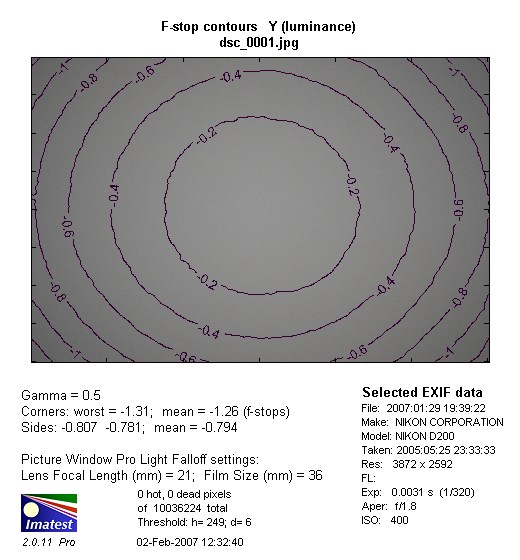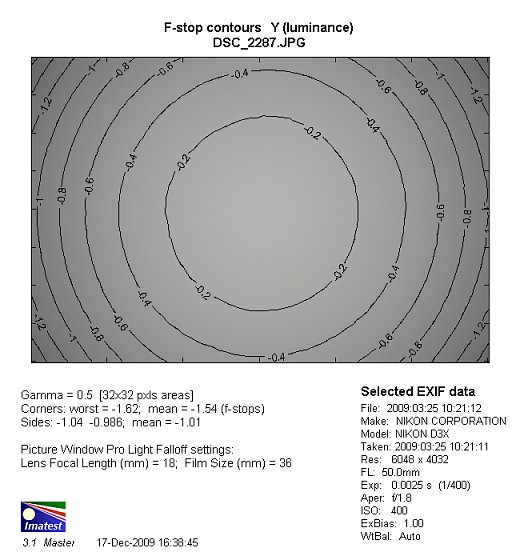Nikon Nikkor AF 50 mm f/1.8D
8. Vignetting

In this category the Nikkor loses to the Canon significantly as the latter by f/1.8 had the vignetting level of only 26% and by f/2.8 its aberration decreased to a marginal value of 6%. As a consolation we must notice the fact that the Sony DT 1.8/50, also a small sensor lens, fared even a tad worse than the Nikkor.
Please Support UsIf you enjoy our reviews and articles, and you want us to continue our work please, support our website by donating through PayPal. The funds are going to be used for paying our editorial team, renting servers, and equipping our testing studio; only that way we will be able to continue providing you interesting content for free. |
- - - - - - - - - - - - - - - - - - - - - - - - - - - - - - - - - - - - - - - - - - - - - - - -
 |
As the Nikkor is a full frame device, we have to check how it fares on that sensor in our test. Nobody should be surprised by the fact that the results on the FX can’t be good – after all the lens had just an average result on the DX sensor. Luckily, the worsening of the performance is not as definite as it we predicted at first glance, though. At the maximum aperture the Nikkor loses 41% of light in the frame corner (-1.54 EV) so only 6% more than on the DX sensor. On stopping down to f/2.0 we see a slightly better situation because the vignetting drops to 38%. A significant improvement can be only noticed by f/2.8 where the level of this aberration amounts to 20%. Vignetting practically disappears completely by f/4.0 and f/5.6 where we had results of 11% and 9% respectively.

 |






